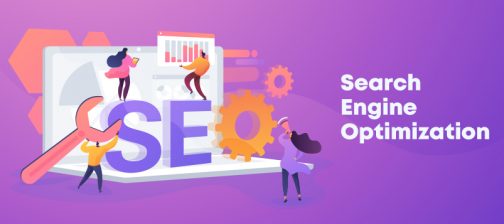Local search is a cornerstone for small businesses. In fact, a study showed that 46% of Google searches are on the hunt for local information. Failure to optimize for local SEO ranking will lead to missing out on prospective customers eager to shop in your area. So, you see, local SEO is nothing less than a behemoth when it comes to keeping your business relevant.
Here, in this blog post, we have crafted a comprehensive guide that encompasses all local SEO tools and tips that will certainly optimize your business for local SEO, thereby taking it to the absolute next level. So, let’s start.
What do we mean by Local SEO?
Search Engine Optimization, a.k.a, Local SEO, is the process of ameliorating search engine visibility for local businesses. One of the key methods businesses can undertake to boost organic traffic from searches performed by customers in nearby areas is to follow the best local SEO practices.
Search engines mainly bank on signals, such as social profile pages, local content, citations, and links, to deliver the most relevant local results to the user to garner information for local search.
Local SEO plays a decisive role in showcasing a business’s products and services to local customers and prospects looking for them.
But how can local SEO boost local search ranking factors? Well, here are a few tips regarding the same.
Tips to Improve Local Search Ranking Factors through Local SEO
Optimize for Google My Business: Google My Business has grown to become the crème de la crème of local search over the years. You should note that Google generously verifies, supports, and shares its content. Thus, Google My Business can be a great tool for businesses to cater to Google’s requirements.
Here are a few tips for ensuring that you are optimized for Google My Business:
- Utilize Google posts within your account
- Craft and authenticate your Google My Business page.
- Motivate your customers to share online reviews
- Give an authentic response to reviews while mentioning the location as well.
If Google verifies your account as authentic, your business can be potentially rewarded with a coveted sidebar space in Google’s local search.
This is not just beneficial from the SEO perspective. Keeping your operating hours and contact information updated can offer a seamless experience for customers to find you easily. On account of 2020’s interference in business operations and consumer shopping behavior, finding up-to-the-minute data has become extremely important.
Publish posts to Google My Business and interact on Social Media: Google considers any content shared on social media to be much more critical than what was previously perceived.
Once you are done carving out an intuitive Google My Business page, share it more on social media, thereby aligning search and social.
Ensure your name, address, and contact number are consistent online: You should make it a breeze for search engines and people alike to find you. One of the easiest ways to do this is to set up your NAP.
What is NAP in local SEO?
NAP is an abbreviation for a business’s Name, Address, and Phone Number (including area code). The NAP should be thought of as a crawlable HTML text on your site. Tihis will allow Google to exhibit it better depending on location-based search results.
Pro Tip: You should never incorporate the NAP within an image. This is because images cannot be crawled from search engines like HTML text.
The header or footer of the site can be the perfect location for the NAP. Additionally, you can also incorporate the NAP on your website’s “Contact Us” page.
- Execute a Local SEO Audit: With the fundamentals down, putting your foot on the brake might be an enticing proposition. However, SEO is an intuitive and ongoing process. Rather than putting a halt there or simply making minute changes and seeing what works out, executing a comprehensive audit to see where your website stands and the areas you need to zero in to achieve your goals does make sense. Now, let’s take a look at the different paraphernalia that make up a local SEO audit:
- Google Search Console Audit: Find out if your site is crawlable. Does it have any nagging issues that can act as a roadblock to indexing?
- Google My Business Audit: How does your Google My Business look like in the SERPs? Is the information relevant?
- Citation Audit: Are all the citations appropriate in the top business directories?
- On-page SEO Audit: Can your site accommodate all the on-page SEO elements that can boost local SEO ranking?
- Website Audit: How well is the performance of your website?
- Competitor Analysis: How well your site matches up with your competitors? Are there any loopholes that call for your attention? What are the possible ways you can match up in terms of content, positioning, inbound links, and design?
- Enhance Your Internal Linking Structure: External links that direct to your site are a good thing, and there are no two ways about it. However, do you know that properly adjusting your internal linking structure can push your local SEO ranking to the moon?
This begs the question, what’s the significance of internal linking? Well, here are some pointers regarding the same:
- Internal linking helps with information architecture and website hierarchy
- Internal linking distributes ranking power and page authority among pages.
- Internal linking promotes website navigation.
So, you see, the aforementioned pointers clearly advocate in favor of improving your internal linking structure.
Final Take:
So, you see, Local SEO is an integral part of any SEO strategy, especially for local businesses. If you are looking for a good local SEO agency, look no further than Prasarnet. We would take care of the nitty-gritty of SEO, thereby ensuring your audience can find you easily when they search online, whether you have a service area or a storefront. Get in touch with us to gain brand authority and recognition online. Request for a no-obligation quotation now.
















